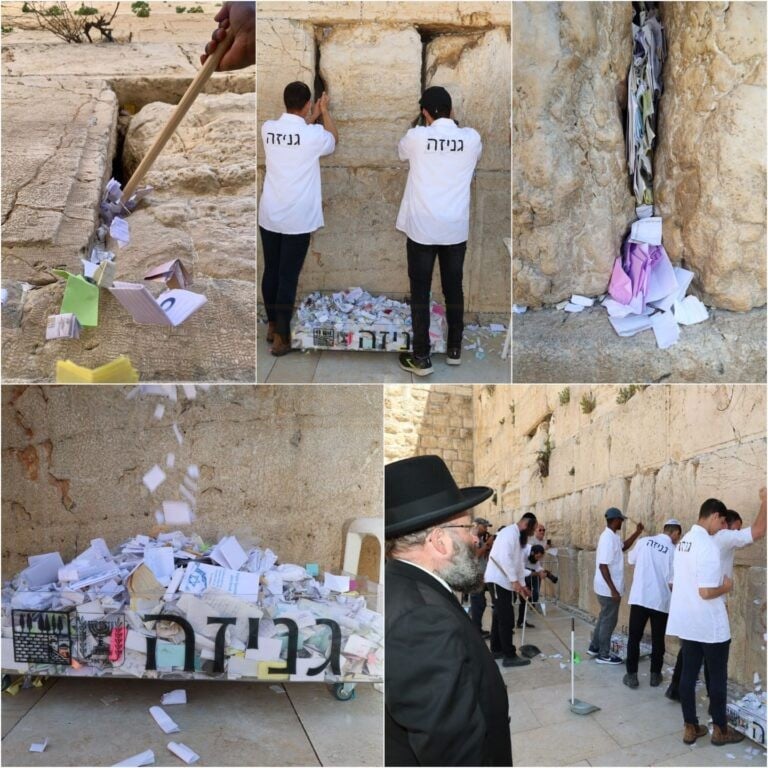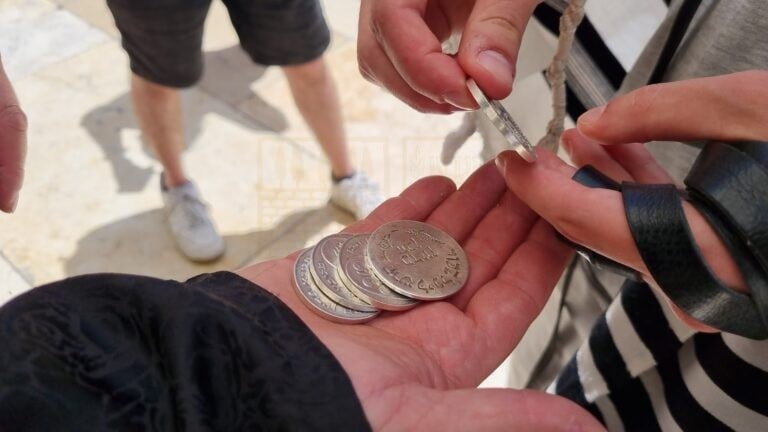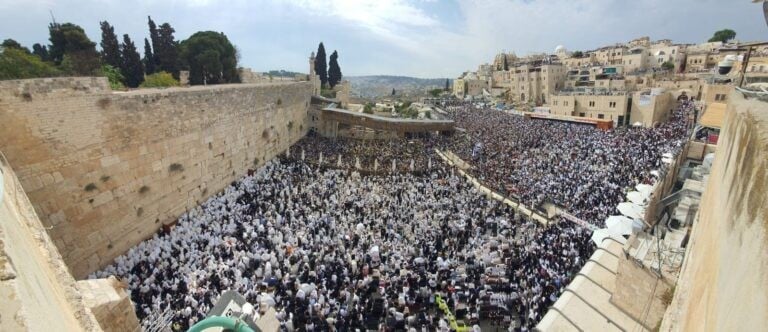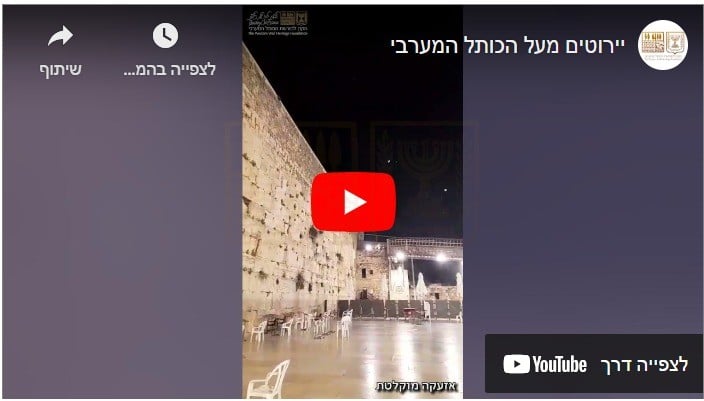Parashat Ki Tisa – 5782
Rabbi Shmuel Rabinowitz, Rabbi of the Western Wall and Holy Sites
Parashat Ki Tisa begins with the final instructions for building the Mishkan, the Tabernacle – the temporary temple that accompanied the Jewish nation through their journeys in the desert. The instructions were given to Moses when he was on Mount Sinai and received the laws of the Torah from G-d.
The Jewish nation waited for Moses to come down from the mountain, and when time passed and he still did not return, they committed the sin of the golden calf. Within a short time of receiving the Torah at the sacred Revelation at Mount Sinai, they reverted to the idolatrous habits of the ancient world and worshipped the golden calf.
As a result of this sin, G-d changed His mind about wanting the nation to build a temple for him. The children of Israel were despondent over this decision and Moses asked that the plans to build the Mishkan remain in place. The Mishkan was much more than a symbolic structure. It was a place in the physical world for the presence of G-d. Therefore, the significance of the question of whether or not the Mishkan would be built was actually a question of whether G-d’s presence would be present in our world or would be more distant.
G-d accepted Moses’ pleas and announced again that His presence would be closer and more intimate. The following two parashot – Vayakhel and Pekudei – reiterate the directions for building the Mishkan, this time as they were conveyed to the children of Israel.
Let’s go back to the beginning of the parasha. With the completion of the instructions for building the Mishkan, G-d commands Moses:
And you, speak to the children of Israel and say: “Only keep My Sabbaths! For it is a sign between Me and you for your generations, to know that I, the Lord, make you holy.”
(Exodus 31 13)
Parashat Vayakhel also begins with the commandment to keep the Sabbath:
These are the things that the Lord commanded to make. Six days work may be done, but on the seventh day you shall have sanctity, a day of complete rest to the Lord.
(Exodus 35, 1-2)
This begs two questions. The first is – What is the connection between the commandments to keep Shabbat with those relating to building the Mishkan; both the first time – when G-d conveyed the directions to Moses, and the second time – when Moses conveyed the directions to the Jewish nation?
The second question is – Why did the order change? The first time, before the sin of the golden calf, the commandment to keep Shabbat came after those for building the Mishkan, whereas the second time, after the sin of the golden calm, Shabbat came before the Mishkan.
When examining these questions, it becomes clear that the Torah was emphasizing that just as a temple should be built in the physical space, so must a temple in time be acknowledged as well – on the Sabbath. And just as holiness can be present in a specific place, so it can be at a specific time.
On Shabbat, the entire world and all the people who are active in it, spend an entire day in a temple that fills the world, a temple in time.
Before the sin of the golden calf, the Mishkan was the site of holiness more important than Shabbat, and therefore, the instructions regarding Shabbat appear only after those given for building the Mishkan. But then the children of Israel sinned with the golden calf and proved that even the most transcendent of revelations – the Revelation at Mount Sinai – cannot on its own strengthen faith in G-d and the connection with Him. A much stronger power was needed. A holiness that does not rest in one particular place but controls time itself. This is the power of Shabbat. Therefore, when Moses conveys to the children of Israel the instructions for building the Mishkan, he begins first with instructions for keeping Shabbat.
The holiness of Shabbat is so strong because it is not dependent on any human factor. It has the power to spread into the six days of the week and into our very bodies. Shabbat – the temple in time – can make work holy and morally more transcendent.
Shabbat is in memory of the days of creation. G-d created the world in six days and on the seventh, he rested. A person who keeps Shabbat and rests from work, actually acknowledges that G-d created the world. Undoubtedly, every act that person performs all week long will gain greater significance inspired by this temple in time.









